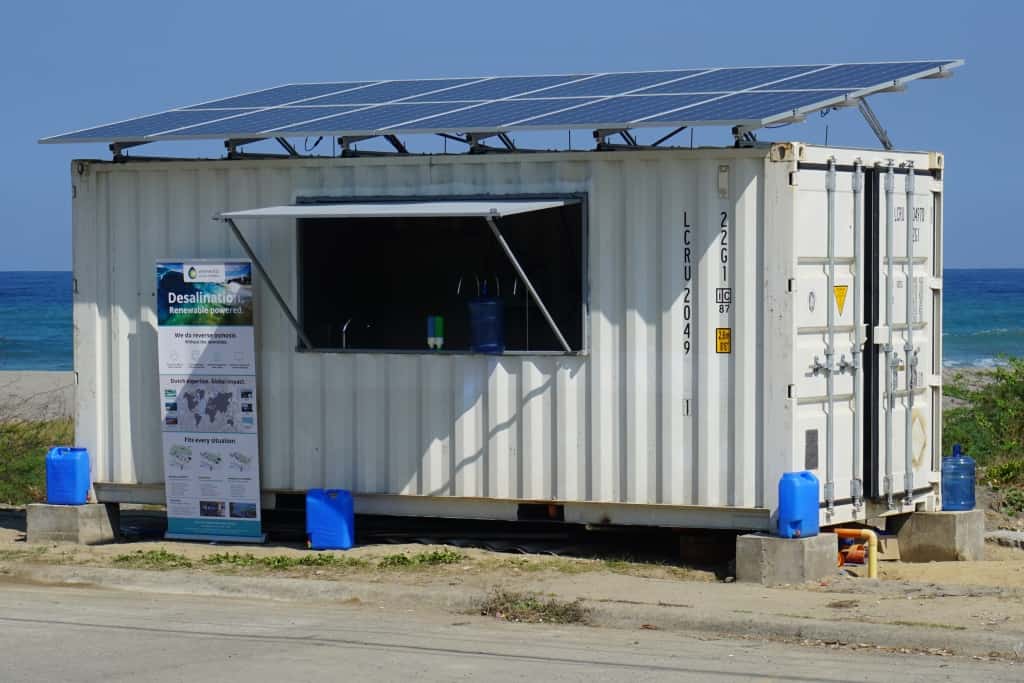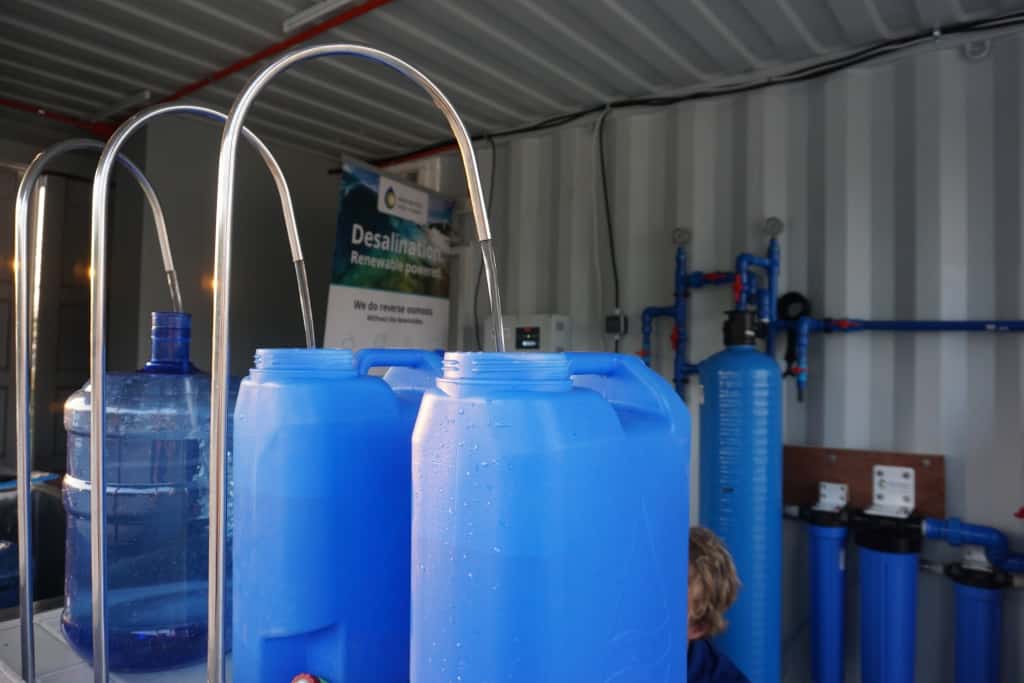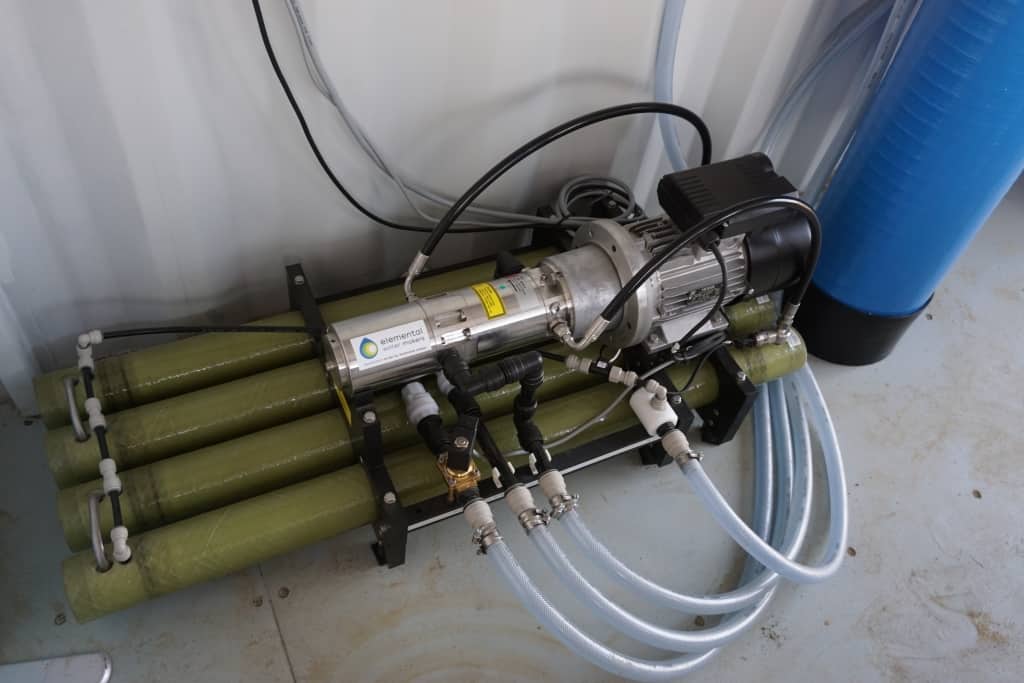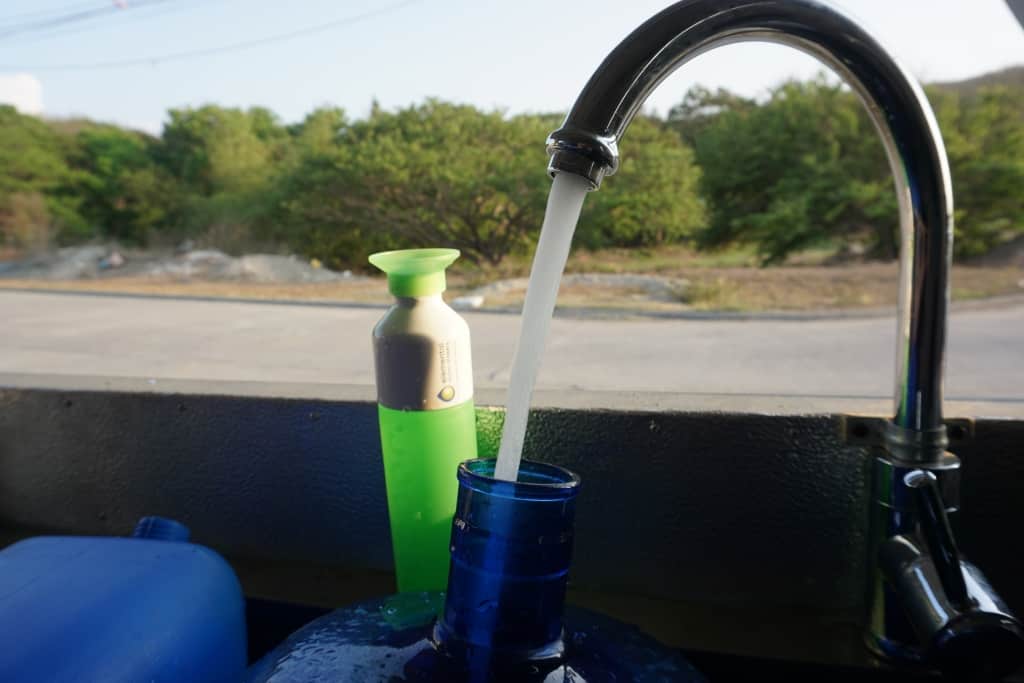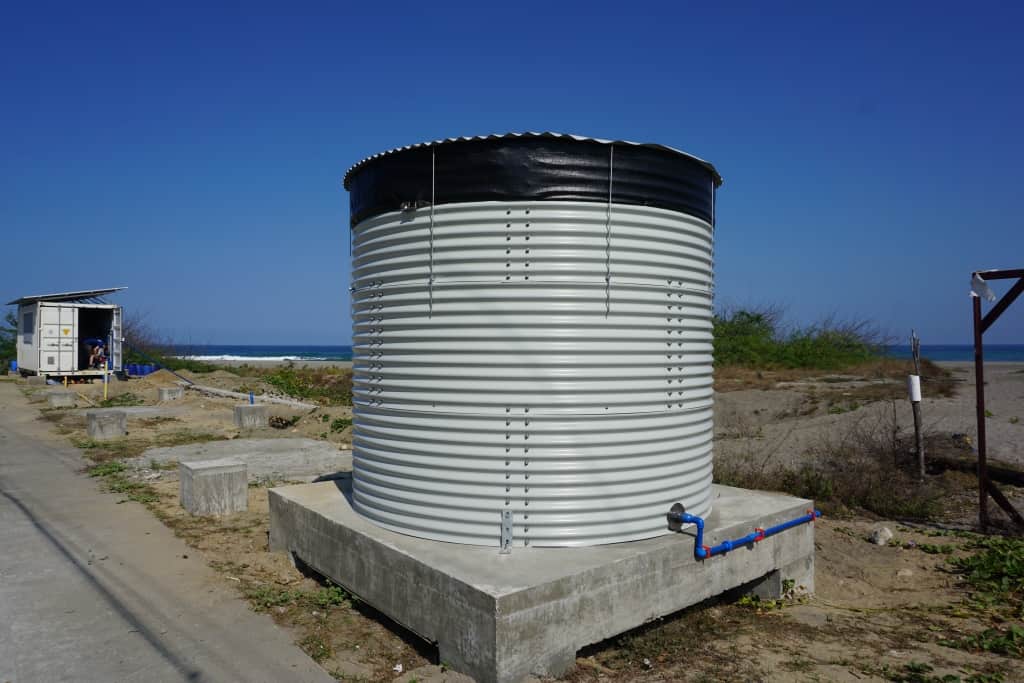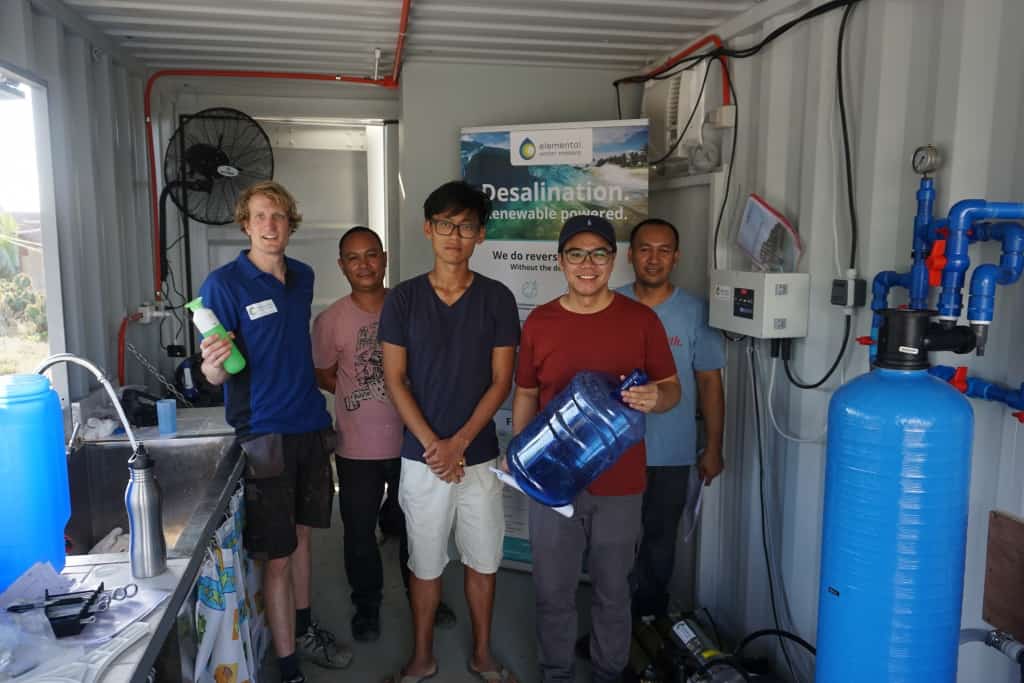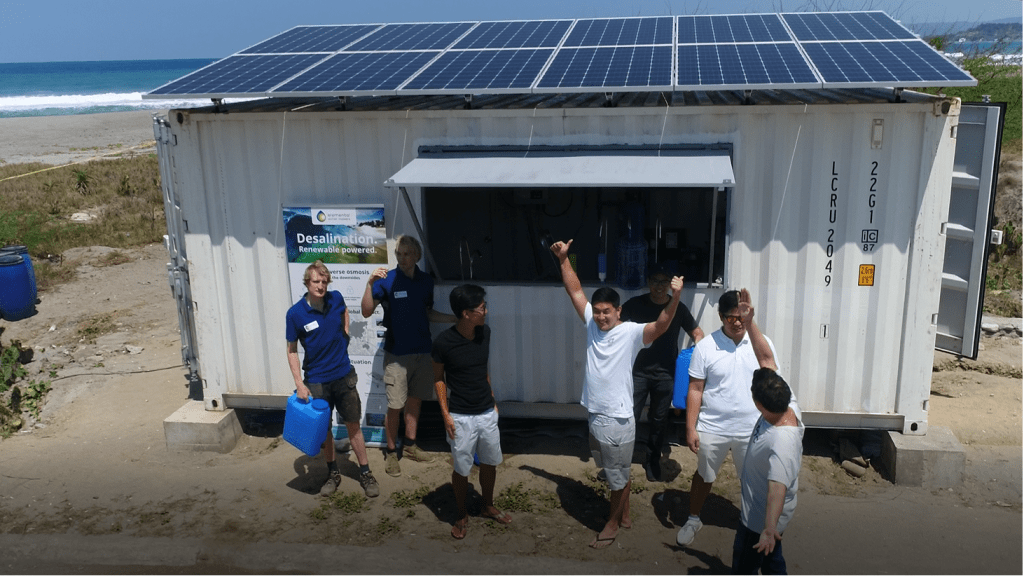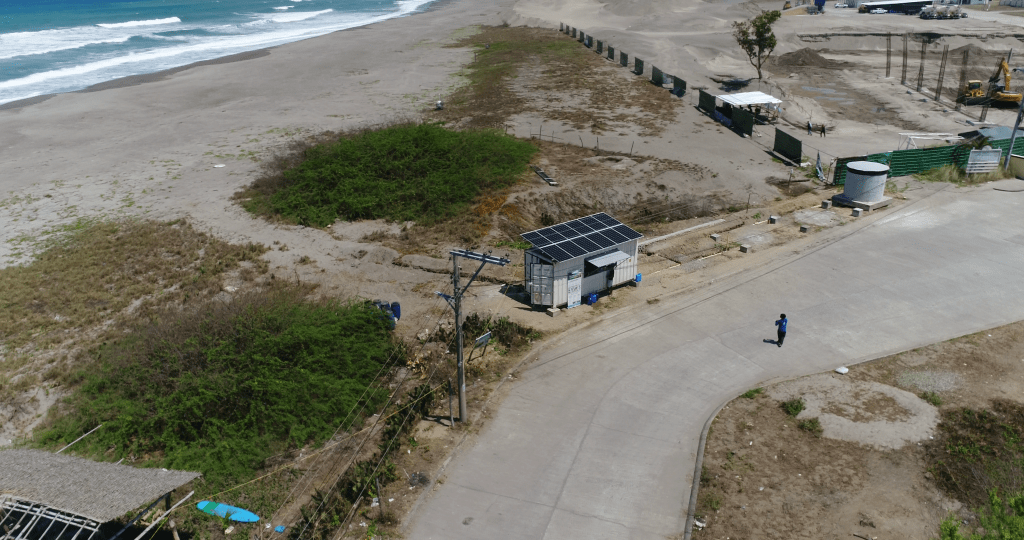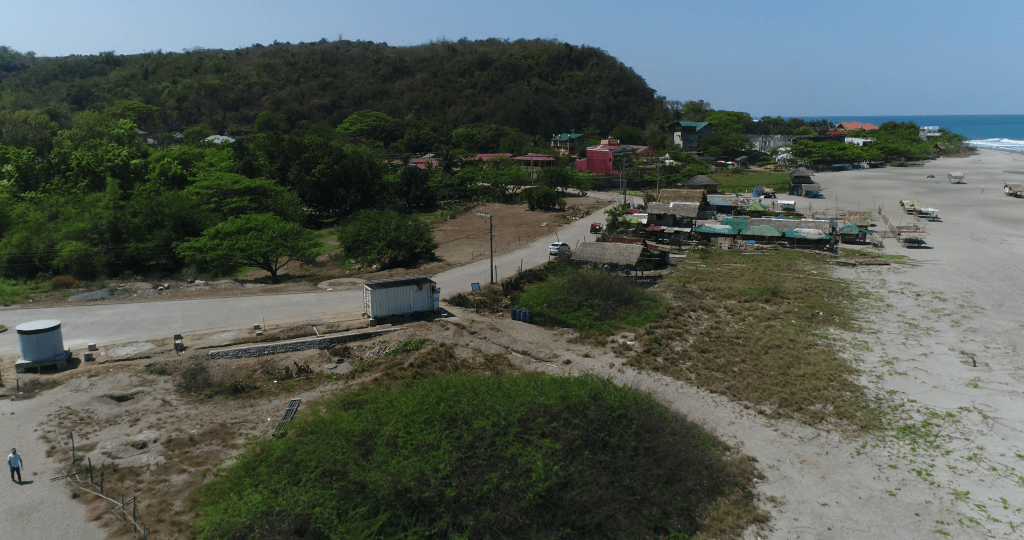Controlling cost, quality, access and impact.
Clean water supply is a major problem in the Philippines, ranking 97th in global access to clean drinking water and having the highest water cost in SE Asia. This project in La Union, Luzon enables potable water at lower expenses, while using the unlimited resources of the sea and sun. Using a containerized solution that has the solar panels mounted on the roof and the water treatment station inside, the unit was installed within 2 weeks. A water tank has been provided to store the clean water on-site.
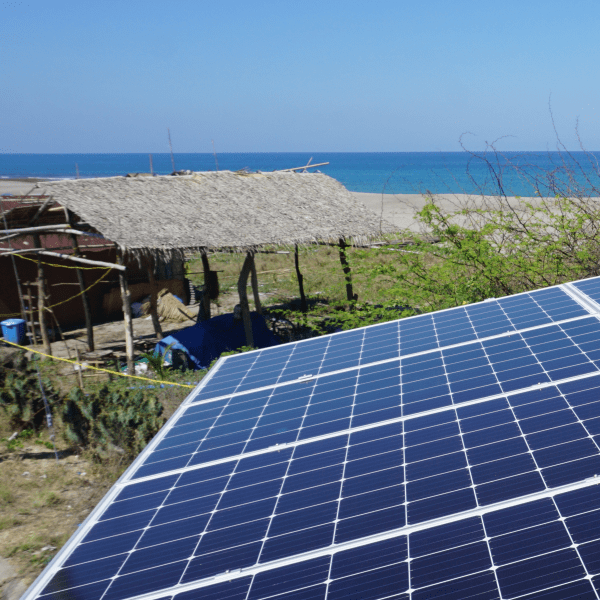
Philippines.
Water kiosk solar desalination with the plug & play solution.
‘’There are four major issues in the provision of potable drinking water in Southeast Asia: water cost, quality, access, and environmental impact. Working with EWM technology we are able to invest locally into decentralized water production solutions that overcome each of these challenges. Starting in the Philippines, regions where we operate can now enjoy affordable high-quality water that has been produced using a sustainable method, in line with our vision.’’


